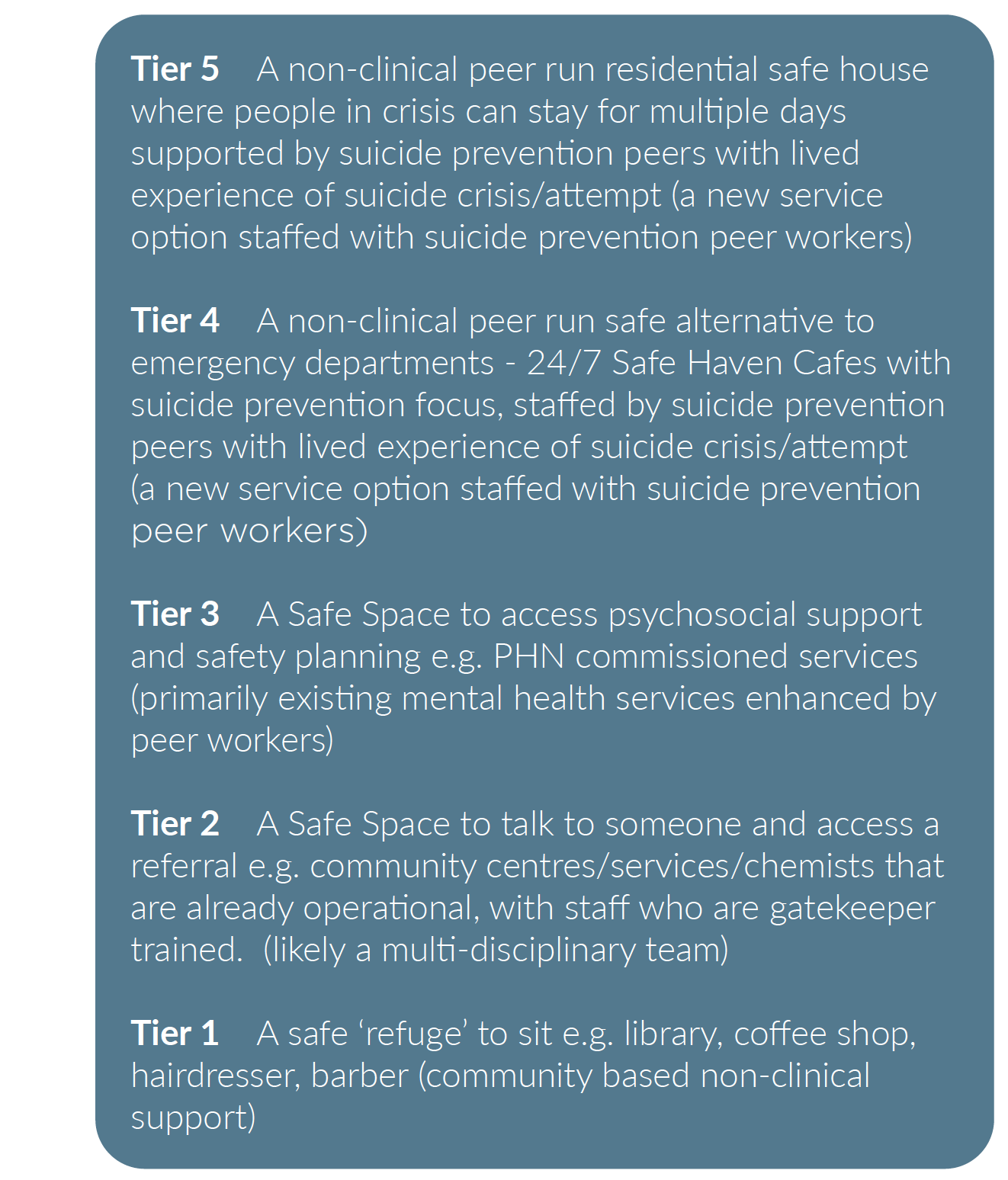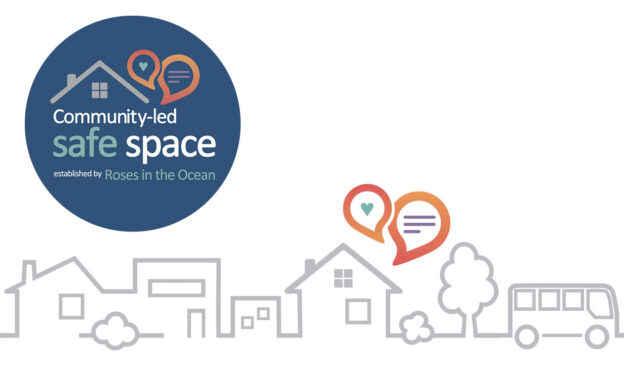The dream is to have a national network of Safe Spaces offering genuine alternatives to existing service models. Locally co-designed services meeting specific local needs, whilst ensuring fidelity to the values, principles and best practice guidelines outlined in national standards.
What are safe spaces?
Safe Spaces are drop-in style supports for people experiencing suicidal crisis that provide warm, welcoming environments in which to reduce distress.
The model was developed in recognition that suicidal crisis is often a response to challenging and distressing life events and acute, clinical services such as emergency departments are not the best fit for people in emotional pain and distress.
Safe Space services are typically staffed by peer workers with their own lived experience of suicidal crisis who can connect with guests through the mutual understanding that comes with meaningful shared experience.
Key components of a safe space
• A trauma-informed ‘no wrong’ door approach
• Non-clinical support that meets the holistic needs of guests
• A compassionate and capable peer-led workforce
• A safe and accessible location
• A warm welcoming environment
• Warm connections to other appropriate and reliable supports
• Shared governance and management
An emerging National Safe Spaces Network
As the national lived experience of suicide organisation in Australia and a leader in lived experience informed systems innovation, Roses in the Ocean has played a central role in the conceptual and practical development of this innovative new service model.
In 2017, Roses in the Ocean was invited to provide investment priorities to the Federal Minister for Health and as a result outlined an extensive suite of non-clinical peer led services. At the ensuing Roundtable in November 2018 involving key sector and government representatives, consensus was formed for the development of a proposal for a 5-tiered National Safe Spaces Network tailored to different needs.
The model was based on Wesley Mission Queensland’s 3-tiered model for mental health Safe Spaces and was extended to include two additional tiers to cater for people experiencing emotional distress, suicidal thoughts and/or in suicidal crisis. Tiers 4 and 5 specifically focus on suicide prevention , and are based on the long-established Safe Haven Cafes and Maytree House respectively in the UK. Maytree House has been staffed for many years now entirely by previous guests of the service. The expanded tiered approach comprises of existing infrastructure enhanced through training and peer workers for Tiers 1-3, and two new service options to create Tiers 4 & 5.

Progress to date
In February 2019, Roses in the Ocean in conjunction with Beyond Blue, Wesley Mission Qld, Australian Red Cross, Everymind and the Australian Institute for Suicide Research and Prevention subsequently submitted a proposal to Government, “Trialling a National Safe Spaces Network to reduce the risk of suicide”, outlining a phased approach to the development of the National Safe Spaces Network.
The proposal supports all five Tiers developing strong connections with each other as well as with local community, social and health services such that regardless of underlying factors contributing to a person’s distress, they can be warmly connected to the next Tier and/or another local service of their choice if they so wish.
Since this initial proposal submission, the Phase 1 scoping activity outlined in the proposal was completed by KPMG alongside the Expert Advisory Group for the National Safe Spaces Network including broad national consultation in 2020.
Phase 2 (development of Standards for the network) was recently identified as a funded initiative in the Federal Budget May 2021.
Since 2019, several states and territories have made investments into Safe Spaces, and Roses in the Ocean has been privileged to lead the co-design processes of over twenty of these.
As with all aspects of suicide, suicide prevention and the lived experience of suicide movement, we continue to learn and wish to share our learnings with others. We have developed and led a range of lived experience informed co-design processes for alternative models of care and support for people who experience suicidal crisis, their carers, and people who are bereaved through suicide.
What we’re learning from communities
Through the process of leading the co-design of 20+ Safe Spaces in a broad range of metropolitan and regional communities and with a rich and diverse range of community stakeholders, Roses in the Ocean has been able to clearly identify the common themes that have emerged about what communities are looking for and wanting from a Safe Space.
Regardless of geographic region, socio-economic status or cultural background, there is an undeniably strong appetite for non-clinical, community and lived experience of suicide led Safe Spaces that are locally co-designed to meet specific local demographic and geographical needs.
Project establishing Tier 4 Community-led Safe Spaces 2022-25
Our expertise in working with people with a lived experience of suicide, proven facilitation skills, and demonstrated capacity to develop and lead co-design initiatives, combine to bring a unique set of expertise to the development of local Safe Spaces. We have now embarked on a national scaling project of Community-led Safe Spaces, supported through the National Suicide Prevention Leadership and Support Program, following a successful pilot in 2021.
Discussion Paper: A National Safe Space Network
…the dream, the reality, the opportunity
